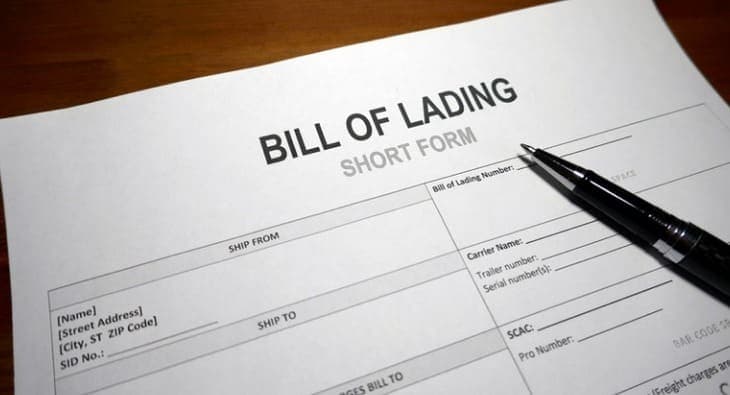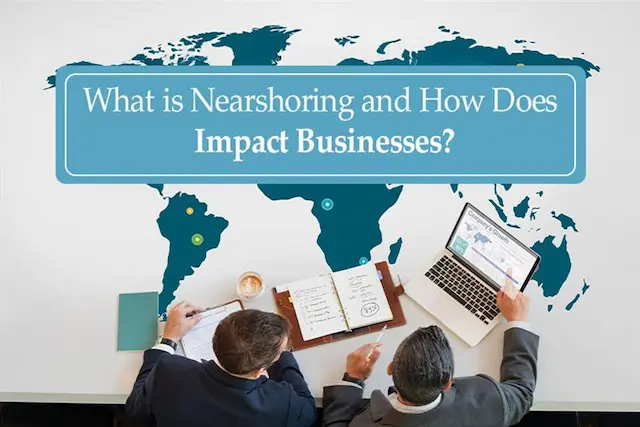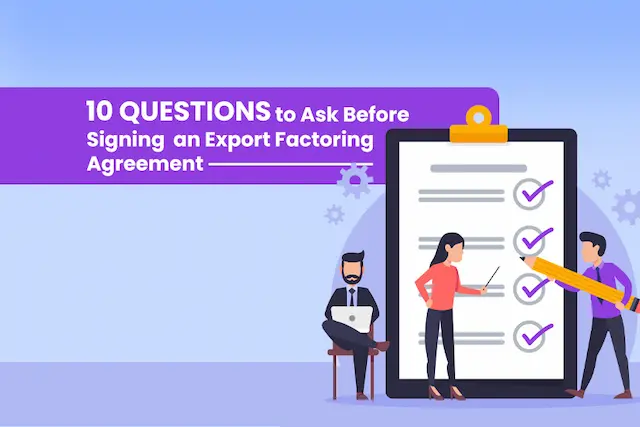In the world of global trade and shipping, there’s a document that plays a vital role – the Bill of Lading (B/L). Imagine a world where goods travel through different kinds of transportation, and every detail of their journey matters. The B/L is like a helpful guide, a receipt, and a contract all rolled into one. It comes in different types, each with a special job.
So, join us on this journey as we explore what a Bill of Lading is, the types it comes in, see some examples, and discover why it’s so important.
Key Takeaways
- A bill of lading (B/L) is an official document issued by a carrier to a shipper. It contains crucial information about the goods being transported, including their type, quantity, and destination.
- The B/L serves multiple purposes: it acts as a document of title, confirming the receipt of shipped goods, and forms a contractual agreement between the carrier and the shipper.
- To be valid, the B/L must accompany the shipped goods and be signed by authorized representatives from the carrier, shipper, and receiver.
Properly managing and reviewing a B/L can help prevent the theft of valuable assets during transportation. - It’s essential to choose the appropriate type of B/L for your shipping needs, as different types cater to specific requirements.
Fact Check on Bill Of Lading
Ancient Origins: The concept of a Bill of Lading dates back to ancient Rome when merchants used a document called “littera de oneribus” to record cargo details and protect against piracy.
Three Originals: Traditionally, Bills of Lading were issued in sets of three originals. Each original had a unique purpose: one for the shipper, one for the carrier, and one for the consignee.
Importance in Trade: A Bill of Lading is often considered one of the most crucial documents in international trade, serving as a receipt, contract, and title deed for goods.
Negotiable and Non-Negotiable: Bills of Lading can be negotiable or non-negotiable. Negotiable B/Ls can be transferred to other parties, while non-negotiable ones are typically used when goods are already paid for.
“Clean” or “Claused”: A “clean” Bill of Lading certifies that goods are in good condition, while a “claused” one includes remarks about damaged or missing items.
Bill of Lading Act: In some countries, there are specific laws and regulations governing Bills of Lading, such as the U.S. Carriage of Goods by Sea Act (COGSA).
Digital Transformation: In recent years, the shipping industry has been adopting electronic Bills of Lading (eB/Ls) to streamline processes and reduce paperwork.
Express Bill of Lading: An express B/L is one where the carrier acknowledges that goods were received in good condition but does not specify the actual condition or packaging.
Telex Release: A telex release is a method of transferring cargo without the need for physical documents, often used in container shipping.
Role in Blockchain: Emerging technologies like blockchain are being explored to enhance the transparency and security of Bill of Lading processes, reducing fraud and errors in shipping documentation.
What is Bill of Lading?
A Bill of Lading (B/L) is like a receipt for goods being shipped. It shows what’s being shipped, where it’s going, and who’s responsible for it. It’s crucial for tracking, legal proof of ownership, and ensuring that goods arrive safely at their destination. It’s an essential document in shipping and trade.
What Does a Bill of Lading Consists?
A Bill of Lading (B/L) typically consists of the following key information:
- Shipper Details: Information about the party sending the goods.
- Consignee Details: Information about the party receiving the goods.
- Carrier Information: Details about the company or entity responsible for transporting the goods.
- Cargo Description: A detailed description of the goods being shipped, including quantity, weight, and dimensions.
- Origin and Destination: The place where the goods are loaded and the place where they will be delivered.
- Shipping Route: The route the goods will take to reach their destination.
- Shipping Terms: The agreed-upon terms and conditions of the shipment.
- Freight Charges: The cost of shipping, including any additional charges.
- Container or Packaging Details: Information about the packaging used, especially for containerized cargo.
- Date of Shipment: The date when the goods are handed over to the carrier.
- Signature and Seal: Signatures of authorized personnel and sometimes an official seal to authenticate the document.
- Special Instructions: Any specific instructions related to handling or delivery.
- Bill of Lading Number: A unique identifier for the document.
An Example of Bill of Lading
Bill of Lading
Shipper: ABC Electronics Ltd.
Consignee: XYZ Retail Inc.
Carrier: Swift Cargo Shipping
Cargo Description:
- 20 cartons of LED TVs
- 10 pallets of smartphones
- Total Weight: 2,500 kg
Origin: Shanghai, China
Destination: Los Angeles, USA
Shipping Route:
- Shanghai Port to Los Angeles Port via sea
Shipping Terms: FOB (Free On Board)
Freight Charges: $5,000
Container Details:
- Container Number: SCSU1234567
- Seal Number: SEAL7890
Date of Shipment: October 15, 2023
Special Instructions: Handle with care. Fragile electronics.
Bill of Lading Number: BL-20231015
Signature and Seal:
[Signature]
ABC Electronics Ltd.
Different Types of Bills of Lading?
Here are all the types of Bill of Lading in shipping:
Clean Bill of Lading: This B/L is like a gold star. It’s given when goods are in perfect condition and will reach their destination without a scratch. It’s like a promise that the carrier will take good care of your stuff.
Received for Shipment Bill of Lading: Imagine you’re sending a birthday gift. The shipper has your gift, but it’s not on the ship yet. This B/L confirms they’ve taken your gift and will put it on the ship soon.
Through Bill of Lading: Sometimes, your goods go on a long journey with different modes of transport, like a ship, then a train, and finally a truck. A Through B/L covers the entire trip, making sure everything goes smoothly.
Claused Bill of Lading: If your gift gets a little damaged or some pieces are missing, this B/L notes the problems. It can be important if you need to ask for compensation or get things fixed.
Container Bill of Lading: When goods are packed in big metal boxes (containers), this B/L tells you everything about that container, like its number, condition, and what’s inside.
House Bill of Lading: Imagine you’re packing a suitcase with clothes from different people. Each person gets their own list of clothes. The House B/L is like those lists, showing who put what in the suitcase.
Master Bill of Lading: This is like the big suitcase itself. It covers everything in all the smaller suitcases (containers). It’s the main document for the whole shipment.
Charter Party Bill of Lading: It’s like renting the whole bus instead of just buying a ticket. When one company hires the entire ship, they get a Charter Party B/L with all the rules they’ve agreed upon.
Multimodal Transport Document: Imagine a journey that’s a mix of car rides, trains, and walking. This document covers the whole adventure, no matter how many types of transport you use.
Forwarders Bill of Lading: If a shipping expert (a freight forwarder) helps you send your goods, they give you this receipt. It shows that they’ve got your stuff and are taking care of it.
Stale Bill of Lading: Think of milk that’s past its expiry date. A Stale B/L is like that. If it’s too old, it might not work anymore, so it needs extra checking.
Short-term/ Blank Back Bill of Lading: Imagine you’re sending a mystery package, and you don’t know everything about it yet. This B/L is like a blank book; you can write more details later.
Straight Bill of Lading: It’s like buying a ticket for a concert online. You’ve paid for it, and the ticket has your name on it. You won’t give it to anyone else; it’s yours.
Order Bill of Lading: This is like having a special type of money. You can hand it over to someone else, and they can use it to get your goods. It’s like a valuable ticket.
Bearer Bill of Lading: Imagine you have a magical ticket, and anyone holding it can get your goods. You don’t need to write a name; the person just needs the ticket.
Surrender Bill of Lading: It’s like saying, “I promise to give you a special key, and you can use that key to get your goods. You don’t need to show the actual key.” It’s a bit like a secret code.
Importance Of Bill Of Lading
Learn the importance of bill of lading below:
Receipt Confirmation (Proof of Pickup): A B/L is like a receipt when you order something online. It shows that the delivery person (carrier) has picked up your goods from the seller (shipper). This helps make sure nothing is missing during the shipment.
Ownership Transfer (Title Deed): Think of a B/L like a certificate for a car. When you sign it over to someone else, they legally own the car. Similarly, a B/L can transfer ownership of goods, saying who owns them now.
Legal Contract (Rules of the Game): It’s like the rules of a game. The B/L lists what should happen during the shipment, so both the seller and the delivery person know what to do and what’s expected.
Cargo Details (Labeling): A B/L is like a label on a package. It describes what’s inside, like saying, “This box has a laptop and a phone.” This helps everyone know what’s being shipped.
Cargo Condition (Safe Delivery): Imagine if you ordered a pizza, and it arrived squished and cold. A B/L makes sure the delivery person (carrier) is responsible for delivering your stuff in good condition, just like ordering food and expecting it to be fresh.
Delivery Proof (Evidence): It’s like having a photo of your pizza before it was delivered. If something’s wrong, you can show the B/L as proof to say, “This is how it was supposed to be delivered.”
Customs Clearance (Passport for Goods): When you travel internationally, customs officers check your passport to know who you are. A B/L is like a passport for your goods, helping customs understand what’s inside the packages and making sure everything is legal.
Financing (Getting Money): Just like you might use your car as collateral to get a loan, a B/L can be used to show that your goods are worth money. This helps businesses get loans to buy or sell things and keep their operations going.
Insurance Claims (Proving Damage): If you have insurance on your phone, and it gets damaged, you show the insurance company pictures. A B/L is like those pictures, proving the condition of your goods and helping with insurance claims if something goes wrong.
Dispute Resolution (Solving Problems): If you and a friend disagree about a game’s rules, you might look at the rule book. A B/L is like a rule book for shipping. If there’s a problem or disagreement during the shipment, you can use it to solve the issue fairly and efficiently.
Bill of Lading VS. An Invoice
A Bill of Lading (B/L) and an Invoice are vital documents in shipping and trade, but they serve distinct purposes. A B/L is a transport document that acknowledges the receipt of goods, their condition, and the carrier’s responsibility for safe delivery. It acts as a contract between the shipper and carrier.
On the other hand, an Invoice is a financial document that outlines the cost of goods or services and is issued by the seller to the buyer. It specifies the itemized charges, terms of payment, and helps facilitate the payment process.
In essence, a B/L focuses on the logistics and transportation aspect, while an Invoice deals with the financial aspect of a transaction. Both documents are crucial in international trade, ensuring goods are delivered and paid for correctly.
Final Words
In the world of global trade, the Bill of Lading (B/L) is like a trusted guide for goods on their journey. It’s a receipt, a contract, and a protector of goods, ensuring they reach their destination safely. Different types of B/Ls cater to various needs, making shipping efficient and secure.
But why is it so important? It confirms receipt, transfers ownership, sets rules, and helps solve disputes. It’s like a passport for goods, guiding them through customs and assisting with financing and insurance claims.
In the world of trade, understanding the B/L is as essential as knowing your way around a map. It’s a powerful tool ensuring the smooth sailing of goods worldwide.





